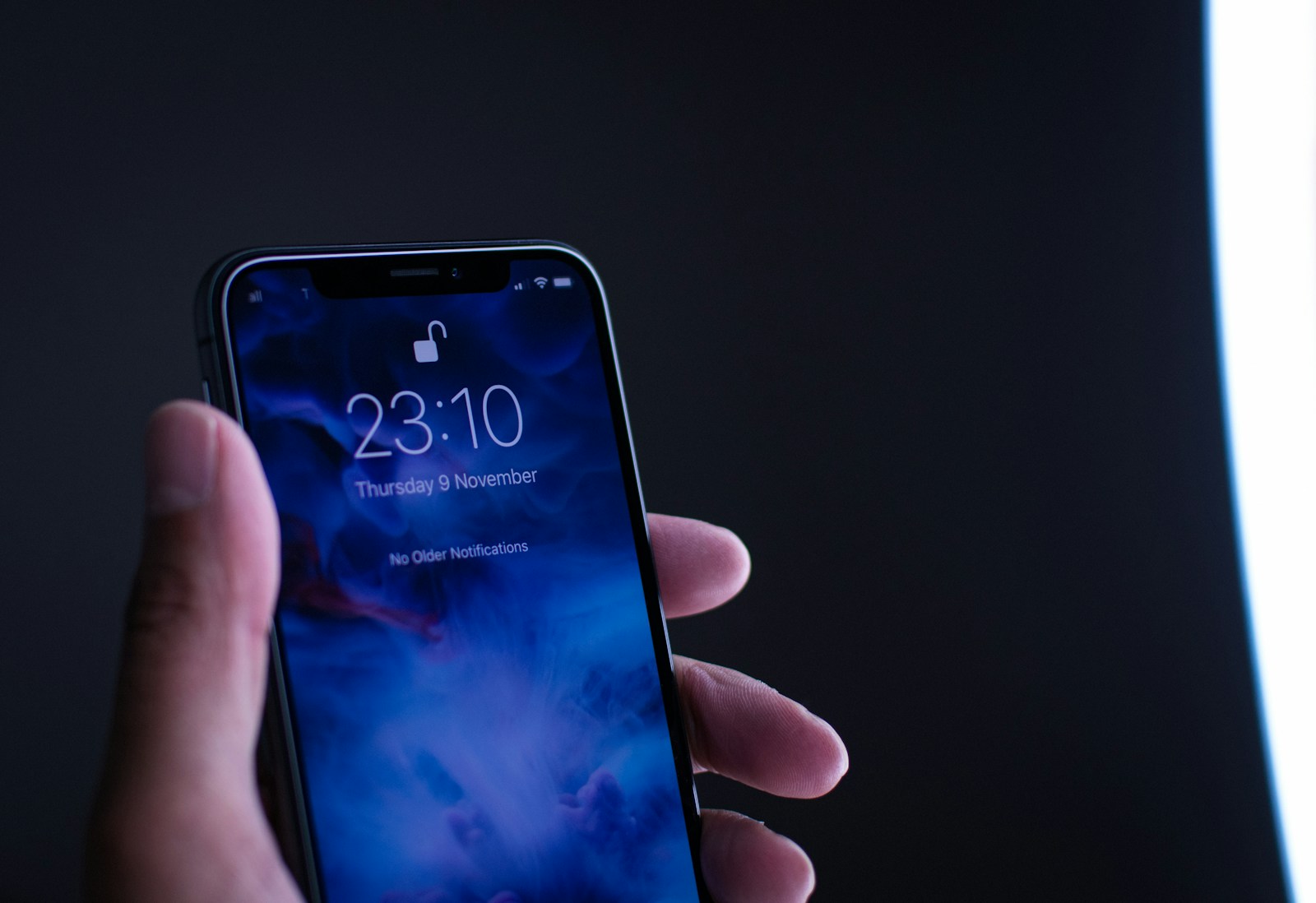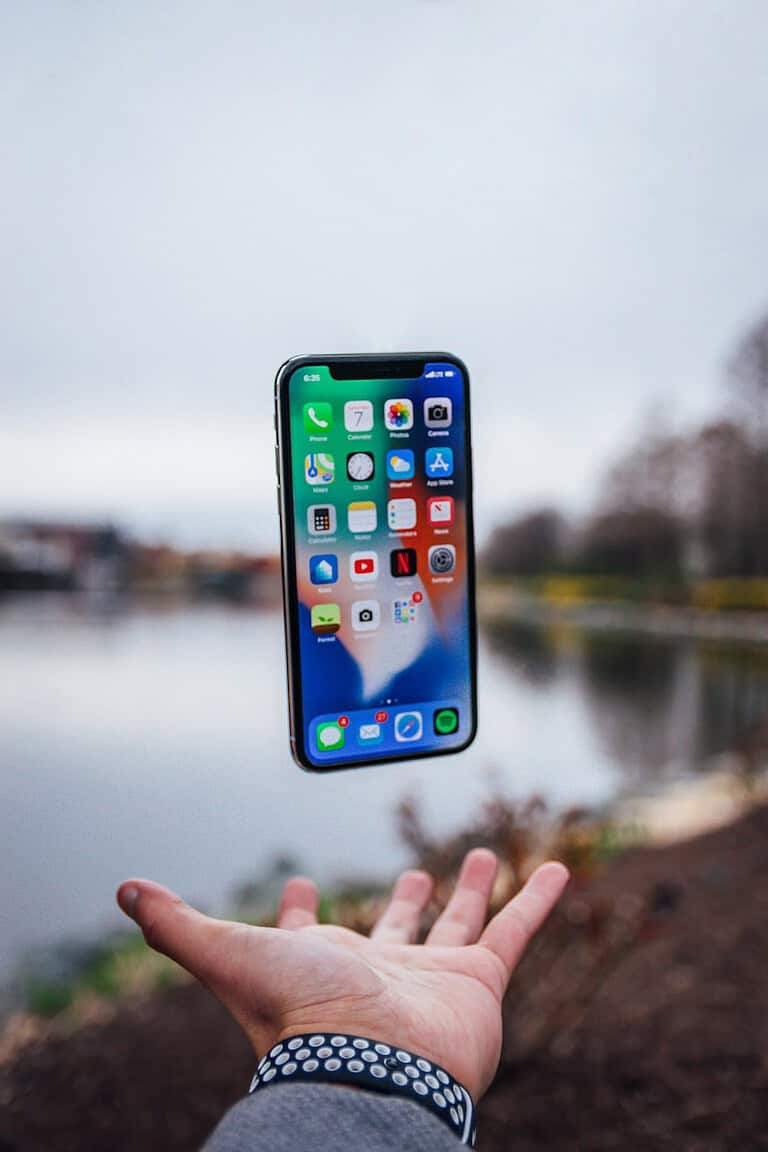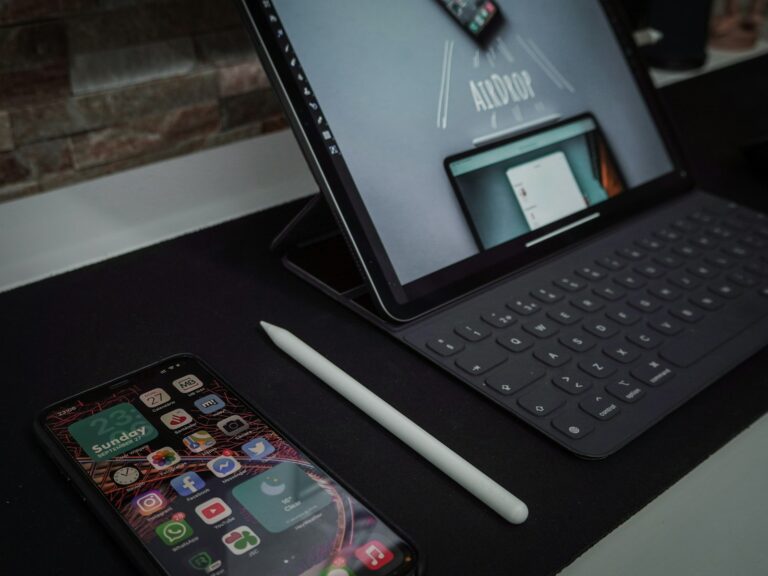
Seeing an “iPhone unavailable” message can be frustrating for users. This error typically occurs after multiple incorrect passcode attempts. The most effective way to fix an unavailable iPhone is to erase and reset the device using your Apple ID and password. This method works for iOS 16 and later versions, including iOS 17.
For older iOS versions or situations where the erase option isn’t visible, alternative solutions exist. Users can connect their iPhone to a computer and use iTunes or Finder to restore the device. Another option is accessing Find My iPhone from a web browser to erase the device remotely.
Prevention is key to avoiding this issue in the future. Regular backups, using Face ID or Touch ID, and being cautious with passcode attempts can help users steer clear of the “iPhone unavailable” screen. These steps ensure that even if the error occurs, important data remains safe and accessible.
⚠️ Why You See “iPhone Unavailable” or “Security Lockout”
After multiple incorrect passcode attempts, your iPhone automatically locks to protect your data:
| Failed Attempts | Lockout Message | Wait Time |
|---|---|---|
| 5 | iPhone Unavailable | 1 minute |
| 7 | iPhone Unavailable | 5 minutes |
| 8 | iPhone Unavailable | 15 minutes |
| 9 | iPhone Unavailable | 60 minutes |
| 10 | iPhone Unavailable / Security Lockout | Must erase iPhone |
Once you reach 10 failed attempts, the only way to regain access is to erase and restore your device.
🧩 Quick Fix 1: Use the “Erase iPhone” Option (No Computer Needed)
If your iPhone is running iOS 15.2 or later, you can unlock it directly from the lock screen.
Steps:
- On the “iPhone Unavailable” or “Security Lockout” screen, tap Erase iPhone (bottom-right corner).
- Tap Erase iPhone again to confirm.
- Enter your Apple ID password to sign out.
- Wait for the device to erase itself.
- Once complete, set up your iPhone as new or restore from an iCloud backup.
✅ Requirements:
- Your iPhone must be connected to Wi-Fi or cellular data.
- You must know your Apple ID and password.
(Source: Apple Support)
💻 Quick Fix 2: Unlock Using a Computer (Recovery Mode)
If you don’t see the Erase iPhone option or can’t connect to the internet, use recovery mode via a Mac or PC.
What You’ll Need:
- A Mac (macOS Ventura or later) or PC with iTunes.
- A USB cable to connect your iPhone.
Steps:
- Turn off your iPhone.
- For Face ID models: Hold Side + Volume Down until the power slider appears.
- For Home button models: Hold Top (or Side) button until the slider appears.
- Enter Recovery Mode:
- Connect your iPhone to the computer while holding the correct button:
- iPhone 8 or later: Hold Side button.
- iPhone 7 / 7 Plus: Hold Volume Down.
- iPhone 6s or earlier: Hold Home button.
- Keep holding until you see the Recovery Mode screen.
- Connect your iPhone to the computer while holding the correct button:
- On your computer, open Finder (Mac) or iTunes (Windows).
- Choose your iPhone → click Restore.
- Wait for the software to download and your iPhone to reset.
Once done, you can set it up as new or restore from backup.
(Source: Apple Support: Forgot iPhone Passcode)
☁️ Quick Fix 3: Use iCloud (Find My iPhone)
If Find My iPhone is enabled, you can erase your iPhone remotely.
Steps:
- Go to iCloud.com/find and sign in with your Apple ID.
- Select your iPhone from the list of devices.
- Click Erase iPhone.
- Once erased, you can restore from your iCloud backup during setup.
✅ Note: This only works if your iPhone is online and Find My iPhone was enabled before lockout.
🔑 After Unlocking: Restore Your Data
Once your iPhone is erased, you can recover your data through one of these methods:
| Backup Type | How to Restore |
|---|---|
| iCloud Backup | During setup → “Restore from iCloud Backup” |
| Mac or PC Backup | Connect to computer → “Restore from Backup” |
| No Backup | You’ll need to set up as new |
🧠 Pro Tips to Avoid Future Lockouts
- Use Face ID or Touch ID for quicker, safer unlocking.
- Write down or securely store your passcode.
- Keep your Apple ID password handy — you’ll need it for unlocking or erasing.
- Regularly back up your iPhone (via iCloud or computer).
🏁 Final Thoughts
An “iPhone Unavailable” message can be stressful, but it’s completely fixable.
If you remember your Apple ID and have a recent backup, you can be back up and running in minutes.
✅ Quick Recap:
- Use Erase iPhone (if available) for the fastest fix.
- Use Recovery Mode if your iPhone is offline or older.
- Use iCloud.com if you prefer remote unlocking.
If none of these methods work or you’ve lost access to your Apple ID, contact Apple Support for account recovery help.
Key Takeaways
- Erasing and resetting the iPhone using Apple ID is the primary solution for the “unavailable” error
- Alternative methods include using iTunes/Finder or Find My iPhone for device restoration
- Regular backups and careful passcode management help prevent future occurrences
Understanding iPhone Availability Issues
iPhone availability issues can prevent users from accessing their devices. These problems often stem from security features designed to protect user data.
Causes for iPhone Unavailability
Several factors can trigger the “iPhone Unavailable” message. Repeated incorrect passcode attempts are a common cause. This security measure locks the device after multiple failed attempts. Software glitches or updates can also lead to unavailability issues.
Hardware problems, like a faulty Touch ID sensor, may contribute to access difficulties. In some cases, changes in device settings or unexpected system crashes can result in the unavailable screen.
Impact of Security Features on Accessibility
Apple’s security features play a crucial role in protecting user data. Face ID and Touch ID offer convenient unlock methods but can sometimes cause accessibility issues. If these biometric systems fail, users must rely on passcode entry.
The passcode lockout feature increases wait times between attempts after multiple failures. This progressive delay can range from 1 minute to several hours. In extreme cases, the iPhone may require a full reset to regain access.
These security measures, while protective, can temporarily limit device accessibility. Users must balance the need for strong security with the potential for lockouts.
Troubleshooting Steps for Unavailable iPhones
When faced with an iPhone unavailable screen, several methods can help regain access to your device. These approaches range from using computer software to initiating recovery mode.
Utilizing iTunes and Finder for Recovery
iTunes and Finder serve as powerful tools for iPhone recovery. Connect your iPhone to a computer with iTunes (Windows) or Finder (macOS) installed. Open the application and select your device when it appears. If the iPhone doesn’t show up, try a different USB cable or port.
Click “Restore iPhone” in iTunes or Finder. This process erases all data on the device and installs the latest iOS version. Before proceeding, ensure you have a recent backup to avoid data loss.
If iTunes or Finder can’t detect your iPhone, put it in recovery mode. This method often resolves more stubborn issues.
Recovery Mode and iOS Restore Options
To enter recovery mode, follow these steps:
- Disconnect your iPhone from the computer.
- For iPhone 8 or later: Press and quickly release the volume up button, then the volume down button. Next, press and hold the side button.
- For iPhone 7: Press and hold the side and volume down buttons simultaneously.
- For iPhone 6s or earlier: Press and hold the home and top (or side) buttons together.
Keep holding until you see the recovery mode screen. Connect your iPhone to the computer while holding the button.
iTunes or Finder will detect the iPhone in recovery mode. Choose “Restore” to reinstall iOS. This process removes all data but often fixes the unavailable screen issue.
Passcode Reset and Its Implications
Resetting your passcode can sometimes resolve the unavailable screen. On newer iOS versions, look for an “Erase iPhone” option at the bottom of the screen. This feature allows you to erase your device directly without a computer.
Tapping “Erase iPhone” removes all content and settings, including the passcode. After the erase, set up your iPhone as new or restore from a backup.
Remember, this method erases all data on your iPhone. It’s crucial to have regular backups to prevent data loss in such situations. After the reset, you can sign in with your Apple ID to restore your data and settings.
Third-Party Solutions and Expert Support
When facing an “iPhone Unavailable” screen, users have additional options beyond built-in iOS features. Third-party tools and professional assistance can provide alternative solutions for unlocking devices.
Leveraging Tools like Tenorshare 4uKey
Tenorshare 4uKey is a popular third-party software designed to bypass iPhone lock screens. This tool can remove various iOS locks, including the “iPhone Unavailable” message. Users connect their device to a computer, run 4uKey, and follow the on-screen instructions. The software downloads the latest firmware and removes the lock without a passcode.
Key features of 4uKey include:
- Compatibility with various iOS versions
- User-friendly interface
- Quick unlocking process
It’s important to note that using third-party tools may void warranties and pose security risks. Users should research thoroughly and proceed with caution.
Engaging with Apple Support for Assistance
Apple Support offers expert guidance for users struggling with the “iPhone Unavailable” screen. Contacting Apple Support provides several benefits:
- Official troubleshooting steps
- Potential alternatives to data loss
- Guidance on warranty coverage
Users can reach Apple Support through:
- Phone
- Online chat
- In-person at Apple Stores
Apple’s experts may suggest solutions not available to the general public. They can also help with account recovery if the issue stems from forgotten Apple ID credentials.
Preventative Measures and Best Practices
Protecting your iPhone from becoming unavailable involves proactive steps and ongoing vigilance. Regular backups and using cloud services play a crucial role, while educating yourself on secure iPhone practices helps prevent lockouts.
Regular Backups and Cloud Services
iCloud backups are essential for preserving iPhone data. Users should enable automatic iCloud backups in Settings. These backups store contacts, photos, and app data securely in the cloud.
For added protection, connect your iPhone to a computer and perform local backups using iTunes or Finder. This creates a second copy of your data.
iCloud offers 5GB of free storage. Users needing more can upgrade their plan. Apple ID accounts link to iCloud, so use a strong, unique password.
Find My iPhone, accessible through iCloud.com, helps locate lost devices. It also allows remote wiping if your iPhone is stolen, preventing unauthorized access.
Educational Resources for Secure iPhone Use
Apple provides online guides for secure iPhone usage. These cover passcode best practices, Face ID setup, and two-factor authentication.
iOS 15.2 introduced additional security features. Users should familiarize themselves with these updates through Apple’s support website.
Third-party cybersecurity websites offer tips for keeping iPhones secure. These include avoiding public Wi-Fi, using VPNs, and recognizing phishing attempts.
Apple Stores and authorized service providers offer free workshops. These sessions teach users about iPhone security features and best practices for daily use.
Frequently Asked Questions
The ‘iPhone Unavailable’ message can be frustrating for users. Several solutions exist to address this issue and regain access to the device.
How can one fix the issue when an iPhone states ‘iPhone Unavailable’?
Users can try waiting out the delay period shown on the lock screen. After the time expires, they can enter the correct passcode to unlock the iPhone.
If no delay is shown, connecting the iPhone to a computer with iTunes or Finder may help. This allows for a device reset if necessary.
What steps should be taken when no option to erase is present on an unavailable iPhone?
When no erase option appears, users should connect their iPhone to a computer. They can then use iTunes or Finder to initiate a factory reset.
This process will erase all data on the device. It’s crucial to have a recent backup before proceeding.
What does the ‘iPhone Unavailable’ message indicate?
The ‘iPhone Unavailable’ message typically appears after multiple incorrect passcode attempts. It’s a security measure to protect the device from unauthorized access.
This message may also show up due to software glitches or system errors.
How does one perform a factory reset on an iPhone that is displaying the ‘iPhone Unavailable’ message?
To factory reset an unavailable iPhone:
- Connect the device to a computer with iTunes or Finder.
- Select the iPhone when it appears in the software.
- Choose the ‘Restore iPhone’ option.
- Follow the on-screen prompts to complete the reset.
What duration does the ‘iPhone Unavailable’ state last?
The duration varies based on the number of incorrect passcode attempts. It can range from a few minutes to several hours.
In some cases, the device may remain unavailable indefinitely, requiring a reset to regain access.
How to put an iPhone into recovery mode when it is showing as unavailable?
To enter recovery mode:
- Connect the iPhone to a computer.
- Press and quickly release the volume up button.
- Press and quickly release the volume down button.
- Press and hold the side button until the recovery mode screen appears.
This process allows users to update or restore their iPhone through iTunes or Finder.





